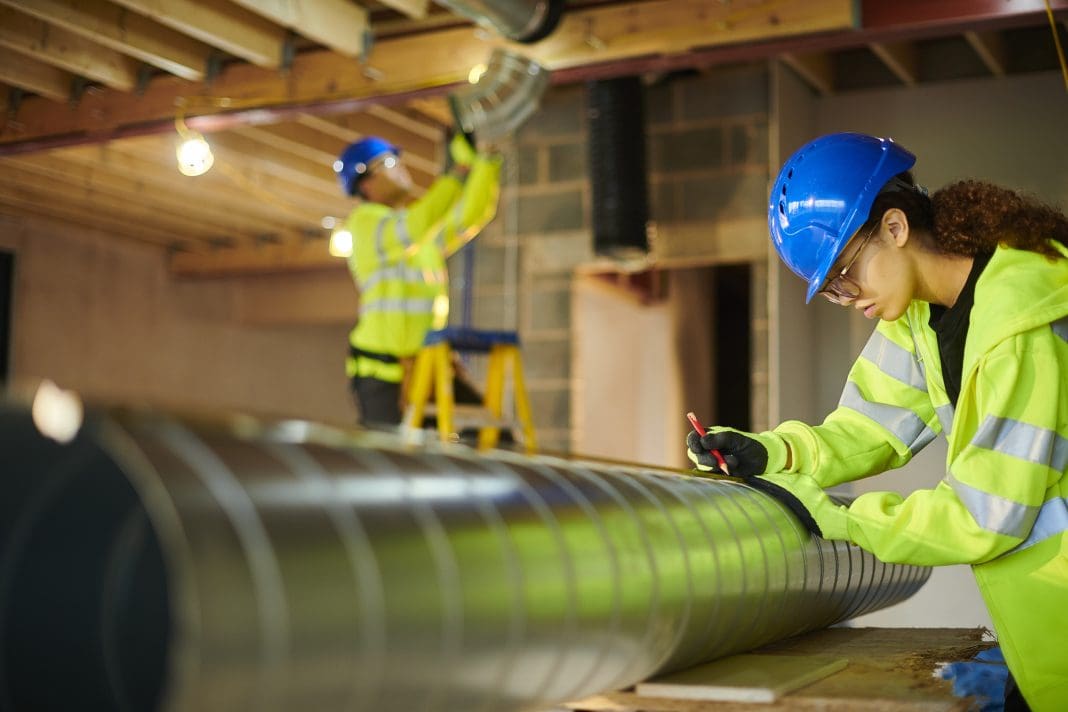International businesses could save a collective $2 trillion a year by focusing on energy efficiency, according to the World Economic Forum. BESA’s Graeme Fox says better use of retrofit data will be crucial in turning potential savings into real ones
Some of the sharpest economic thinkers on the planet recently highlighted the central role that retrofitting buildings could play in saving businesses millions of dollars a year in a report prepared for the recent World Economic Forum (WEF) meeting at Davos, Switzerland.
The report, published in partnership with the financial consultant PwC, included a range of “doable today” business actions that would slash demand for energy, boost profits, and cut carbon.
Transforming Energy Demand was backed by over 120 CEOs of large global corporations and concluded that retrofitting buildings alone could cut global energy demand by 12%.
Buildings were responsible for 30% of the world’s energy usage in 2022
Buildings were responsible for 30% of the world’s energy usage in 2022 but they also offer the greatest energy reduction potential of all economic sectors.
WEF researchers calculated that energy intensity in buildings could be reduced by 38% using existing solutions. The WEF also emphasised retrofit’s wider benefits including reduced staff absenteeism and improved productivity (because retrofitted facilities are higher quality) and the creation of 3.2m jobs worldwide to deliver retrofit programmes.
It also emphasised that retrofitting buildings increased their value by up to 15%.
The WEF researchers concluded that energy efficiency was the most “under-addressed” aspect of global approaches to net zero.
It claimed proven measures could deliver a short-term, cost-efficient reduction in energy demand of almost a third shared across the buildings, industry and transport sectors, and avoid the need to construct almost 3,000 extra power stations.
However, retrofit work is not always straightforward. To be successful, it requires detailed examination of the current performance of the building in terms of energy efficiency, general performance and its impact on occupant health, wellbeing and comfort.
Harnessing retrofit data is key to making more informed decisions
Getting all of that right means harnessing all the digital tools at our disposal and then analysing and interpreting data collected from sensors and systems. This underpins any successful retrofit because it allows for more informed decision-making.
For energy efficiency, we must first monitor electricity, gas and water usage to establish baseline consumption patterns and then focus retrofit measures where they will make the most difference.
Measuring indoor air quality (IAQ) is another key task and more retrofit programmes are now considering the impact of CO2 levels, VOCs, particulate matter (PM), temperature and humidity to ensure that the opportunity is not wasted to make buildings “safe havens” from polluted outdoor conditions and tackle growing mould and damp problems.
It is now easier to monitor airflows and air change rates thanks to widely available digital tools and this can be harnessed to the measurement of occupancy patterns and space usage to optimise HVAC systems and lighting.
Building envelope performance
Retrofit programmes should also consider the performance of the building envelope as this has a major impact on the efficiency and effectiveness of the building services. If air infiltration rates, thermal conductivity and moisture levels are not addressed it is difficult to get the right heating, cooling and ventilation balance.
The new Future Homes & Buildings Standards, due to come into force next year and currently the subject of a government consultation, could play a big role in embedding this kind of best practice. However, it is vital that the legislative measures reflect the importance of taking a holistic approach to retrofitting our underperforming building stock.
The surge in heat pump demand now being seen across the UK building stock is obviously a good thing but individual technologies can only achieve so much. In fact, heat pumps are a good example of a solution that can only achieve its full potential as part of a wider whole building retrofit.
The standards will also stress the key role to be played by heat networks in coming years as we seek to move from whole building to whole community decarbonisation solutions.
Transparency about net zero strategies
ESG (environmental, social and governance) reporting is another influential retrofit market driver because clients are under pressure to be fully transparent about their net zero strategies to bolster their corporate reputations.
In addition, all newly leased commercial buildings will need to achieve EPC ratings of C or higher from 2025 – with existing leases required to meet the same target by 2028.
Landlords who miss these deadlines risk being left with unlettable “stranded assets” while their retrofitting neighbours can reap the commercial benefit of the 15% uplift in value estimated by the WEF’s researchers.
At the start of this year, BESA urged the government to make this The Year of Retrofit, but the Davos report should inspire us to go further and plan for The Decade of Retrofit as big business wakes up to the potential and necessity of investing in the value of their built assets.
This will also put building engineering at the heart of the corporate and carbon reduction agenda but we must first prove to business, government and clients that our skills and technologies can help them achieve those values… and reduce pollution along the way.
Graeme Fox 
Technical director
Building Engineering Services Association

















